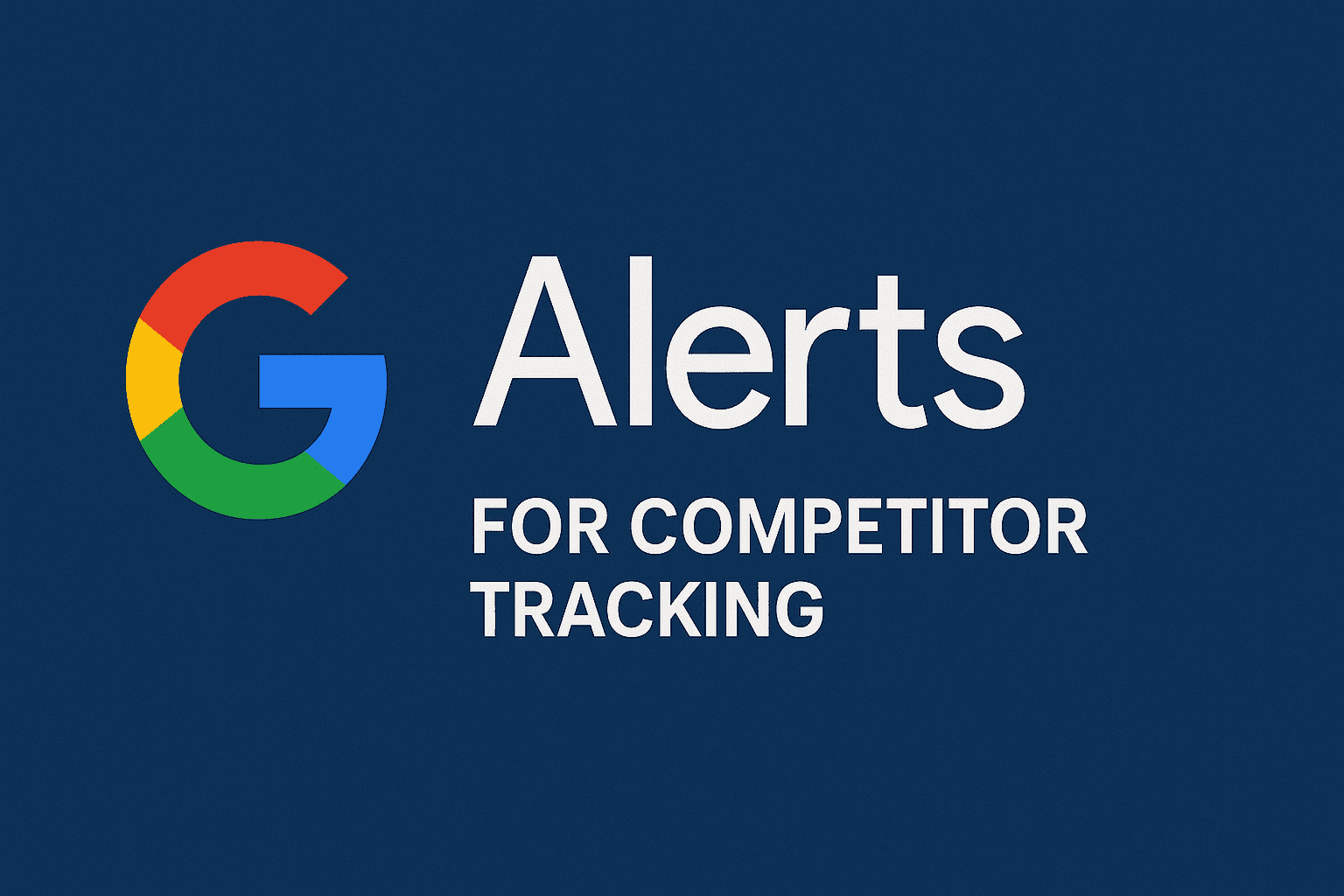Google Alerts for Competitor Tracking: A Practical Guide (And When to Upgrade)

Google Alerts is the Swiss Army knife of competitive intelligence—free, simple, and universally accessible. But like any basic tool, its effectiveness depends on how you use it. While 72% of startups use Google Alerts for competitor monitoring (2024 Crayon report), only 9% extract strategic value from it. Why? Most users miss critical setup nuances and misinterpret the data.
In this guide, you’ll learn:
- How to configure Google Alerts for maximum competitor insight
- Advanced techniques to analyze findings
- When to recognize its limitations—and upgrade to AI-driven tools like RivalSense
Step 1: Setting Up Google Alerts Like a Pro
A. Keyword Strategy: Beyond Competitor Names
Most users track “[Competitor Name]” and call it a day. To uncover hidden insights, monitor:
- Product codenames: e.g., “Project Gemini” + Competitor
- Executives: “CEO John Smith” + “[Competitor]”
- Industry jargon: “zero-party data” + “[Competitor]”
- Partnership hints: “partners with” + “[Competitor]”
Pro Tip: Use search operators to cut noise:
- Exclude press releases:
"[Competitor]" -"press release" - Target specific sites:
"[Competitor]" site:linkedin.com - Capture controversies:
"[Competitor]" + ("lawsuit" OR "recall")
B. Source Selection: Where to Look
Google Alerts lets you filter by source type. For strategic insights:
- News: Track PR moves and media positioning.
- Blogs: Uncover thought leadership shifts.
- Web: Catch forum discussions (e.g., Reddit threads complaining about a competitor’s pricing).
Avoid: “All” sources—it floods your inbox with irrelevant social media spam.
C. Frequency & Delivery
- Startups in fast-moving industries (e.g., AI): “As-it-happens” alerts.
- Established businesses: “Daily” or “Weekly” digests to spot trends.
Step 2: Analyzing Alerts for Strategic Gold
Google Alerts delivers raw data—your job is to find patterns.
A. The 5 Signals to Watch
- Product Launches: Sudden spikes in articles mentioning “[Competitor] + launch” or “[Competitor] + beta.”
- Geographic Expansion: “[Competitor] + opens + [city/country]” or job postings for regional managers.
- Partnerships: “[Competitor] partners with” + vendors, influencers, or tech platforms.
- Crisis Signals: “[Competitor] + delay/lawsuit/outage” in forums or local news.
- Talent Moves: Executives mentioned in “joined” or “departing” contexts.
Case Study:
A SaaS company noticed alerts for “[Competitor] + SOC 2 compliance.” Cross-referenced with LinkedIn, they found the competitor hiring a security auditor—a sign of enterprise-focused positioning. They accelerated their own compliance roadmap to block the threat.
B. Sentiment Mining (The Manual Way)
Google Alerts lacks sentiment analysis, but you can hack it:
- Positive buzz: Look for adjectives like “innovative,” “disruptive,” or “game-changer.”
- Negative trends: Keywords like “glitch,” “overpriced,” or “refund” in Reddit/forum alerts.
Pro Tip: Export alerts to a spreadsheet and tag sentiment (+1, 0, -1) monthly to track perception shifts.
Step 3: The Limits of Google Alerts—And When to Level Up
While Google Alerts is a solid starting point, its flaws become apparent as you scale:
1. Noise Overload
- Problem: 60-80% of alerts are irrelevant (e.g., job postings for “[Competitor] janitorial staff”).
- Example: An alert for “[Competitor] + cloud” might highlight a weather app article.
- Fix with RivalSense: AI filters out non-strategic mentions and prioritizes moves like pricing changes or regulatory filings.
2. Blind Spots
- Problem: Misses non-indexed sources (e.g., private Slack communities, regulatory databases).
- Example: A competitor’s FDA application might surface months later via news—not when filed.
- Fix with RivalSense: Monitors 50+ hidden sources, including government registries and earnings call transcripts.
3. Zero Context
- Problem: Alerts tell you what happened, not why it matters.
- Example: “[Competitor] hires CFO from Uber” is just a headline—no analysis of their fintech ambitions.
- Fix with RivalSense: Delivers insights like, “New CFO’s background in IPO scaling suggests Competitor X is preparing for a public listing.”
4. No Competitive Benchmarking
- Problem: Can’t track multiple competitors side-by-side.
- Example: You’ll know Competitor A raised prices but miss that Competitors B-C undercut them.
- Fix with RivalSense: Auto-compares pricing, feature launches, and hiring trends across your competitive landscape.
Upgrade Your Intelligence: Why Leaders Choose RivalSense
Google Alerts works for casual monitoring, but RivalSense is for leaders who need:
✅ AI-Powered Filtering: Ditch noise. Get alerts only when competitors change pricing, leadership, or regulatory status.
✅ Cross-Source Synthesis: Connect dots between LinkedIn hires, website edits, and patent filings.
✅ Plain-English Insights: No data wrestling. Just morning briefs like, “Competitor Y’s 3 website changes signal a pivot to healthcare verticals.”
Designed for:
- CEOs who need boardroom-ready intel in <10 minutes/day.
- Founders anticipating competitors’ next moves.
- Executives tired of stitching together 10+ tools.
Try RivalSense Risk-Free
Google Alerts is free—but your time isn’t. If you’re spending hours weekly sifting through alerts, it’s time to upgrade.
👉 Start Your Free Trial Today
No credit card. Start getting strategic insights today.
Outsmart Competitors with RivalSense
Final Thought:
Google Alerts is like a bicycle—great for short trips. But when you’re racing competitors, you need a Ferrari.
In 2025, leaders won’t win with raw data. They’ll win with context, speed, and actionable insights. Choose wisely.
